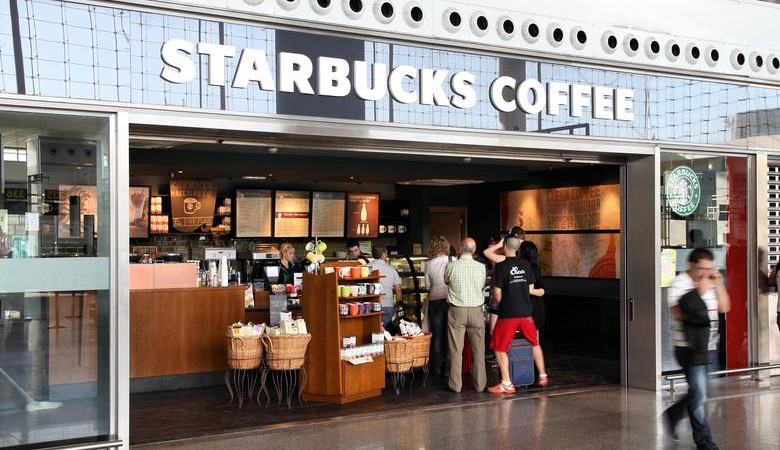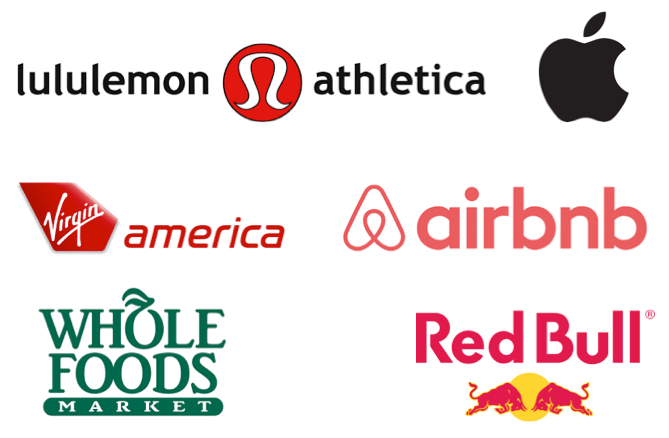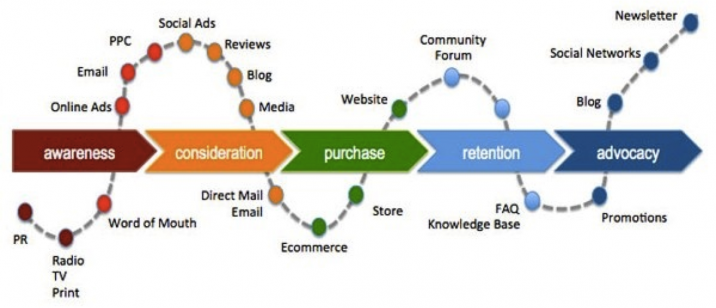
Btrax Design Company > Freshtrax > 3 Keys to Creat...
3 Keys to Creating a Global Lifestyle Brand
Although trends and movements can be global, lifestyles aren’t universal. There are many social, ethnic, political, generational and cultural factors at play.
On the surface, a lifestyle may be the same, but how to reach those people may vary greatly within one country and between countries. Brands that want to be successful globally today need to balance their unique brand values and the aspirations of local cultures and sub-cultures in real-time.
Lifestyle branding bridges the gap between cheap, utilitarian commodities and aspirational luxury goods. In a particular lifestyle, branding resonates with the rapidly growing global middle class, which I explored in another post. This group wants the brands they buy from to reflect their interests, emotions, attitudes, and opinions.
Smarts brands listen closely, engage trendsetters or influencers and create product-audience feedback loops, especially connecting with subculture groups such as extreme athletes and building from there.
A few examples of lifestyle brands familiar to Americans include:

All of these companies have been hugely successful and many are the most valuable companies in their sector. What makes them different is that they look to inspire and motivate people — triggering emotional purchases by helping to define or support their customers’ way of life.
The Changing Relation Between Companies & Customers
The rapid adoption of smartphones, e-commerce and social media have amplified a shift in the way companies and customers interact.
It’s not a coincidence that non-tech brands are starting to adopt Silicon Valley human-centered design and lean startup processes, which balance being responsive to users’ needs and also giving them a compelling vision of the future.
Lifestyle brands require business vision and focus. The most important aspect is how consumers view a company, which is created through deliberate, sophisticated image creation. Three areas are key to succeeding as a modern lifestyle brand:
1) Be Personal
Personalization starts and ends with data. Collect data wherever you can, online or offline. Every touch point matters in the customer journey.

Social media coupled with video storytelling is a powerful way to emphasize our personal, emotional connections to the things we own, rather than the product specs and prices.
One of btrax’s clients is Toy ‘R’ Us, whose most recent Christmas promotional video doesn’t even show any of their products, yet just a single tweet by the official Toys ‘R’ Us account received nearly 2000 retweets and 2400 favorites.
A boy receives the perfect Christmas gift. #AwesomeMomenthttps://t.co/XlGzWgRx52
— ToysRUs (@ToysRUs) December 23, 2015
Discounts and deals are important, but as a brand, you want to build a relationship with your customers, so it’s important to shape strategy around how you want people to feel when someone mentions your brand name.
Both online and offline data sources are a powerful way to shape your personalization and measure what is working. To get the full benefit requires proper setup and tools to collect information, constant monitoring, analysis, hypothesis, and testing.
However, it’s important for lifestyle brands not to fall into the trap of following data blindly. Brands need to listen to their customers intently, but customers also respect brands who know who they are and have a vision for a different world, which data can’t provide.
By fusing real customers data signals with a brand image that emphasizes the relationship between toys and kids as well as kids and parents, btrax’s team was able to triple Toys R Us’ mobile e-commerce revenue.
2) Design Experiences
btrax recently worked with Blue Nile, the world’s top online diamond jewelry seller with business growing by $50 million per year and a 2014 revenue of $473 million.
One of Blue Nile’s unique and powerful differentiators is its retail web room experience. When designing an online experience, especially for a high price item like a diamond ring, much thought should be put into how the customer shops, what they see first and how they make buying decisions.
For a jewelry retailer, it’s important for customers to actually experience wearing the products, such as wedding bands and take pictures of themselves wearing them. For that reason, Blue Nile sets up showrooms smaller than a full store, where customers can try things on and experience the look and feel.

Image credit: Blue Nile/Pinterest
The product samples on display are not real diamonds, but still gives customers the try-it-on experience they want for something as important as a wedding band. This is a see-it-in-store, buy-it-online model that is becoming increasingly common to bridge between online and offline to keep retail expenses down while addressing the limits of online shopping.
Besides the web rooms, Blue Nile also implemented fun content marketing to help educate customers about their products. They increased their use of different forms of media like video, infographics, and surveys. They also published a new blog, Cut and Polished, which is aimed at product education.
When btrax launched Blue Nile on Rakuten, Japan’s dominant online marketplace that we covered previously, we helped them create a branded page geared towards the customer experience. They also have diamond and jewelry consultants ready to reassure and support customers buying experience.

3) Grow Community and Champions
Another one of btrax’s retail clients is Bonobos, an online men’s fashion retailer. Their rapid rise from student-founded men’s pants brand to a top fashion label is an inspiring story.
Success wasn’t accidental. Bonobos founders started out with a simple mission to solve the frustration many men felt towards the lack of options for great fitting pant options.
From their humble beginnings holding in-person trunk shows, they not only got direct customer feedback and ideas but gradually built a core of champions who were enthusiastic in spreading the word. In turn, those champions grew a passionate, engaged community to support Bonobos’ brand vision.
Bonobos doubled its revenue in four years of business and ended 2014 with $100 million in earnings. As they grew, Bonobos wanted to keep investing in the community and their direct customer connection. So they opened guide shops, essentially pop-up stores that let people touch and try their pants similar to Blue Nile.

At a Bonobos guide shop, customers can make an appointment, try on products, place an order online, and have their purchased goods delivered the very next day. This created a “hands-free” shopping experience where customers wouldn’t have to lug their shopping bags around for the rest of the day.
Other Retail Trends
Beyond the three areas I outlined above, there are few others that retailers should consider deploying, depending on your exact product, brand image and which markets you are in:
Native ads: In an era where many millennials are using some form of ad-block on their browsers and phones, native ads have become an important movement in advertising that displays promotional messages to potential customers in a way that fits in with the rest of the content they are consuming. This style of advertising is less annoying than traditional advertising and can often be mistaken for regular content.
Cross-device conversion: Everyone has a smartphone in their hands now, and there are increasing instances where someone might search something on their phone then later purchase it on a laptop or vice versa. Marketers today need to keep track of e-commerce conversions across different devices.
In-store purchases (Offline-to-online): Many mobile or internet first e-commerce brands are opening pop-up stores where customers can come and try on products before purchasing online. Brands doing this include Warby Parker, Bonobos, and Modcloth. This happens in the other direction as well, where customers would look for products in the store then buy online somewhere else like Amazon where they might get a better price.
Local inventory ads (LIAs): LIAs show customers searching online for a particular item exactly where it is available at a nearby store location, along with local store hours and other helpful information like directions. According to Sears Hometown and Outlet Stores, the results have been a 122% increase in store visits compared to using only Product Listing Ads, which don’t include local store information.
NFC tags: Most smartphones today support NFC technology which allows marketers to direct shoppers’ phones directly to anywhere they’d like – whether it’s the brand’s website, blog, coupon or video. Retail brands can place NFC tags in convenient places in the store and encourage customers to tap their phones to redeem a coupon or other such call-to-actions.
Interested in learning about other areas of branding or selling online? Check out some of our most read blog articles:
- Branding and Culture: The Winning Combination
- How to Sell Online in Japan
- What Companies Get Wrong When Entering the Japan Market
- Selling in Japan series
1) How to attract users and gain traffic
2) How to convert traffic into sales
3) How to retain your customers
Featured image: Tupungato / Shutterstock.com
Check Out Our FREE E-Books!
Discover our FREE e-books packed with valuable research and firsthand insights from industry experts!
Dive into our collection below, and stay tuned – we’re constantly adding new titles to keep you ahead of the curve.







